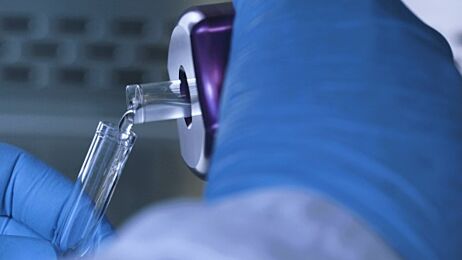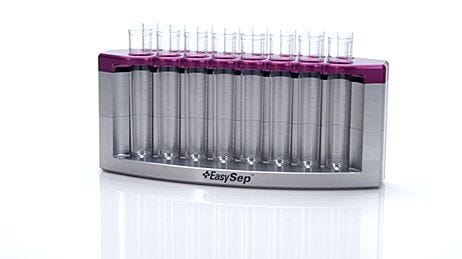How to Prepare a Buffy Coat from Whole Blood
How to generate a buffy coat from a whole blood sample, which can then be used for downstream analyses or further cell separation
Materials
- Whole blood sample collected with anticoagulants
- Recommended medium according to your cell isolation kit's Product Information Sheet. Recommended options include:
- EasySep™ Buffer (Catalog #20144)
- RoboSep™ Buffer (Catalog #20104)
- Phosphate-buffered saline containing 2% fetal bovine serum (PBS + 2% FBS, Catalog #07905)
- Tube for centrifugation
Protocol
- Add an equal volume of recommended medium to whole blood and mix gently.
- Centrifuge at 800 x g for 10 minutes at room temperature (15 - 25°C) with the brake off.
- Remove the concentrated leukocyte band (this is the buffy coat), plus a small portion of the plasma and concentrated red blood cells (RBCs). The target is to concentrate the leukocytes approximately 5-fold while maintaining an equivalent ratio of leukocytes to RBCs (e.g. collect 2 mL of buffy coat when starting with 10 mL of whole blood).
- RBCs are present at a ratio of at least 100 RBCs per nucleated cell.
- The concentration of nucleated cells in the sample does not exceed 5 x 107 cells/mL.
STEMCELL Technologies offers various tools and products that have been optimized for isolation of cells from whole blood, buffy coat, spleen, and lymph node, and are not restricted to a certain RBC ratio or cell concentration.
Learn more about efficient technologies for isolating cells from blood samples >
Request Pricing
Thank you for your interest in this product. Please provide us with your contact information and your local representative will contact you with a customized quote. Where appropriate, they can also assist you with a(n):
Estimated delivery time for your area
Product sample or exclusive offer
In-lab demonstration







